Tag Archives: machine learning
Pre-training vs Fine-tuning in LLM: Examples
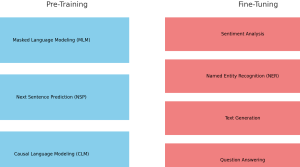
Are you intrigued by the inner workings of large language models (LLMs) like BERT and GPT series models? Ever wondered how these models manage to understand human language with such precision? What are the critical stages that transform them from simple neural networks into powerful tools capable of text prediction, sentiment analysis, and more? The answer lies in two vital phases: pre-training and fine-tuning. These stages not only make language models adaptable to various tasks but also bring them closer to understanding language the way humans do. In this blog, we’ll dive into the fascinating journey of pre-training and fine-tuning in LLMs, complete with real-world examples. Whether you are a …
IIT Madras Fellowship in AI for Social Good
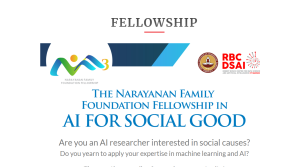
Are you an AI researcher driven by the passion to make a positive impact on society? Do you seek to use your knowledge in machine learning and AI to contribute to real-world issues? Are you intrigued by the idea of joining a leading interdisciplinary research center for data science in India? Then here is the opportunity to discover a unique opportunity that aligns with your aspirations and expertise at the Robert Bosch Centre for Data Science and Artificial Intelligence (RBCDSAI), IIT Madras. Apply Now for fellowship program in AI for social good. About RBCDSAI RBCDSAI is one of India’s pre-eminent interdisciplinary research academic centers specializing in Data Science and AI. …
Machine Learning Projects for Final Year Students: Examples
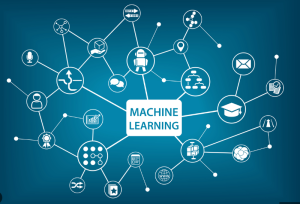
As aspiring data scientists, computer scientists, and statisticians, the final year of your academic journey presents a perfect opportunity to showcase your skills and knowledge in practical applications. In this blog, we will explore a diverse set of exciting machine-learning projects that are well-suited for final-year students. These projects cover various domains, including education, healthcare, crime prediction, and more. We will delve into each project’s description, problem type (classification, regression, etc.), and the methods used for analysis. Whether you are seeking inspiration for your final year project or simply eager to explore the power of machine learning in real-world scenarios, this blog has something for everyone! In case you would …
Exploring Amazon Science Publications: A Quick Guide

In the ever-evolving world of technology and research, staying updated with the latest advancements is crucial. Amazon Science Publications has emerged as a treasure trove for those hungry for knowledge, offering a plethora of articles that span a wide range of topics. Whether you’re an AI / ML researcher, a student, or just a curious mind, this platform has something for everyone. Let’s delve into the vast ocean of articles available on Amazon Science Publications. Research Areas: Tags: Conferences: Journals: Date: Whether you’re looking for the latest articles from 2023 or want to revisit the gems from 2015, Amazon Science Publications has got you covered. With articles spanning from 2015 …
Greedy Search vs Beam Search Decoding: Concepts, Examples
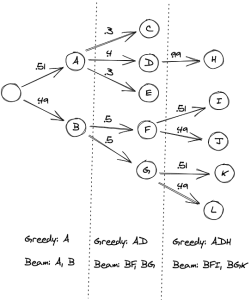
Have you ever wondered how machine learning models transform their intricate calculations into clear, human-readable language? Or how your smartphone knows exactly what you’re going to type next before you even start typing? These everyday marvels are powered by a critical component of natural language processing (NLP) known as ‘decoding methods‘. But how do these methods work, and why are there different types? In the vast field of machine learning, a primary challenge in natural language processing tasks is converting a model’s computational output into an understandable and coherent text. Whether it’s autocompleting your sentences, translating text from one language to another, or generating a news article, these tasks involve …
NPTEL’s Machine Learning & Data Science Online Courses (Jul-Nov 2023)

In the rapidly evolving domains of Machine Learning, Data Science, and Artificial Intelligence, the quest for quality education and courses has become paramount. For those familiar with the educational landscape of India, the Indian Institutes of Technology (IITs) stand out as beacons of excellence. Established by the government of India, the IITs are autonomous public technical universities that are recognized globally for their outstanding curriculum, research, and innovation. Every year, thousands of students vie for a coveted spot in these institutions, and their alumni have made significant contributions to technology and research worldwide. NPTEL (National Programme on Technology Enhanced Learning), in collaboration with these premier IITs, has curated a range …
Vanishing Gradient Problem in Deep Learning: Examples
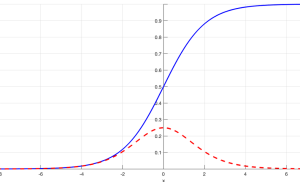
Ever found yourself wondering why your deep learning (deep neural network) model is simply refusing to learn? Or struggled to comprehend why your deep neural network isn’t reaching the accuracy you expected? The culprit behind these issues might very well be the infamous vanishing gradient problem, a common hurdle in the field of deep learning. Understanding and mitigating the vanishing gradient problem is a must-have skill in any data scientist‘s arsenal. This is due to the profound impact it can have on the training and performance of deep neural networks. In this blog post, we will delve into the heart of this issue, learning the calculus behind neural networks and …
DCGAN Architecture Concepts, Real-world Examples

Have you ever wondered how AI can create lifelike images that are virtually indistinguishable from reality? Well, there is a neural network architecture, Deep Convolutional Generative Adversarial Network (DCGAN) that has revolutionized image generation, from medical imaging to video game design. DCGAN’s ability to create high-resolution, visually stunning images has brought it into great usage across numerous real-world applications. From enhancing data augmentation in medical imaging to inspiring artists with novel artworks, DCGAN‘s impact transcends traditional machine learning boundaries. In this blog, we will delve into the fundamental concepts behind the DCGAN architecture, exploring its key components and the ingenious interplay between its generator and discriminator networks. Together, these components …
Autoregressive (AR) Models Python Examples: Time-series Forecasting
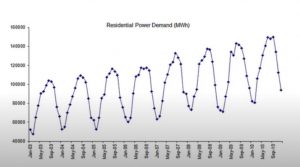
Autoregressive (AR) models, which are used for text generation tasks and time series forecasting, can be employed to predict future values predicated on previous observations. This blog post will provide the concepts of autoregressive (AR) models with Python code examples to demonstrate how you can implement an AR model for time-series forecasting. Note that time-series forecasting is one of the important areas of data science/machine learning. In subsequent blogs, we will take up the topic of how autoregressive models can be used as generative model for text generation tasks. For beginners, time-series forecasting is the process of using a model to predict future values based on previously observed values. Time-series data …
GAN vs VAE: Differences, Similarities, Examples
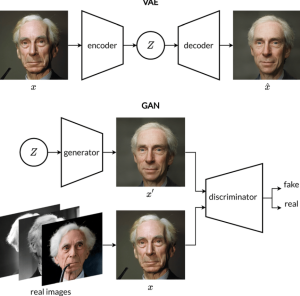
Are you curious about how machines not only learn from data but actually create it? Have you ever found yourself puzzled while trying to choose between Generative Adversarial Networks (GANs) and Variational Autoencoders (VAEs) for your project? Or, even trying to understand when to use GANs or VAEs? Well, you’re not alone! In this blog post, we’re going to learn about two key technologies GANs vs VAEs in the generative modeling, comparing their strengths, weaknesses, and everything in between. We will dive into real-life scenarios, showing when you might want to pull out GANs to generate high-quality, realistic images, and when you’d prefer the control that VAEs provide over the …
Generative Adversarial Network (GAN): Concepts, Examples

In this post, you will learn concepts & examples of generative adversarial network (GAN). The idea is to put together key concepts & some of the interesting examples from across the industry to get a perspective on what problems can be solved using GAN. As a data scientist or machine learning engineer, it would be imperative upon us to understand the GAN concepts in a great manner to apply the same to solve real-world problems. This is where GAN network examples will prove to be helpful. What is Generative Adversarial Network (GAN)? We will try and understand the concepts of GAN with the help of a real-life example. Imagine that …
K-Means Clustering Concepts & Python Example
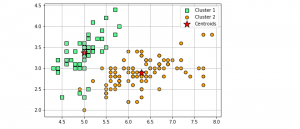
Clustering is a popular unsupervised machine learning technique used in data analysis to group similar data points together. The K-Means clustering algorithm is one of the most commonly used clustering algorithms due to its simplicity, efficiency, and effectiveness on a wide range of datasets. In K-Means clustering, the goal is to divide a given dataset into K clusters, where each data point belongs to the cluster with the nearest mean value. The algorithm works by iteratively updating the cluster centroids until convergence is achieved. In this post, you will learn about K-Means clustering concepts with the help of fitting a K-Means model using Python Sklearn KMeans clustering implementation. You will …
Dynamic Pricing & Machine Learning: Strategies, Examples
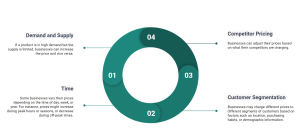
Are you a product manager looking to maximize profits and improve product performance, or a data scientist eager to leverage the power of machine learning to solve complex business problems related to dynamic pricing? Do you ever wonder how businesses can optimize their pricing strategies to stay competitive, cater to customer expectations, and enhance their market positioning? In this blog, we uncover the intersection of advanced AI technologies with smart pricing strategies. In an era where customer expectations, market trends, and competitor actions change rapidly, businesses need an agile and data-driven approach to pricing. That’s where dynamic pricing coupled with machine learning comes into play. We’ll explore compelling strategies, reveal …
Customer Segmentation in Banking: Examples
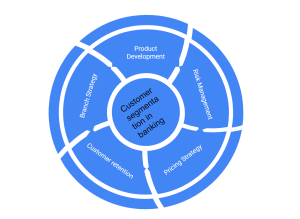
Ever wondered how some banks seem to know exactly what their customers need, almost before the customers do? They’re probably leveraging the power of customer segmentation. We all know how vital it is for any businesses including banks to truly understand their customers in today’s competitive landscape. And that’s where the magic of customer segmentation comes into play. It is enabling banks to dive deep into customer data and extract actionable insights, influencing everything from crafting personalized experiences to strategic decision making. In this blog post, we’re going to learn about customer segmentation use cases in banking, showcasing how it’s going to impact product development, risk management, and customer acquisition. …
Machine Learning Use Cases in Finance: Concepts & Examples

What if we can build solutions that could predict financial market trends, assess credit risk with unerring precision, detect fraudulent activities before they occur, and significantly automate your day-to-day operations? Such solutions can be called as predictive analytics solutions which leverages AI / machine learning for making predictions. Machine learning has found its way into finance and is being used in various ways to improve the industry. Finance has always been a data-driven industry, and in recent years, machine learning has become an increasingly important tool for making sense of that data. In this blog post, we will explore some of these use cases and explain how machine learning is …
Weighted Regression Model Python Examples
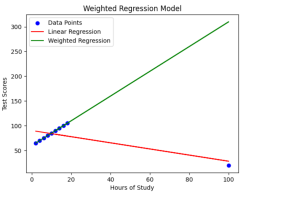
Have you ever wondered how regression models can be enhanced to provide more accurate predictions, even in the presence of outliers or data points with varying significance? Enter weighted regression machine learning models, an approach that assigns weights to data points, allowing for precise adjustments and improvements in prediction accuracy. In this blog post, we will learn about the concepts of weighted regression models with the help of examples while demonstrating with the help of Python implementation. Traditional linear regression is a widely-used technique, but it may struggle when faced with outliers or situations where some data points carry more weight than others. However, weighted regression models help overcome these …
I found it very helpful. However the differences are not too understandable for me